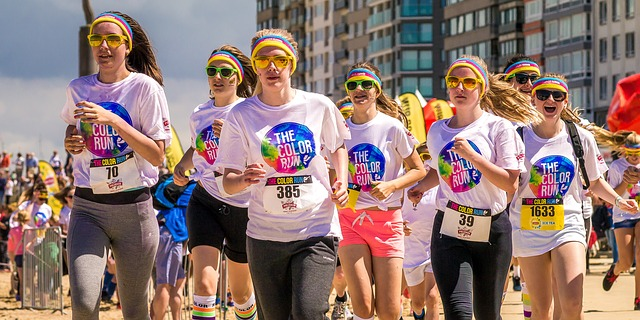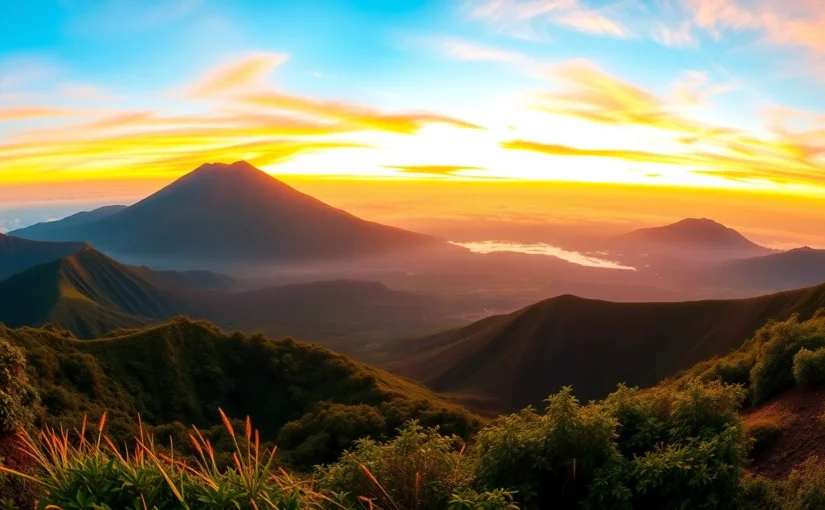Introduction to Mount Rinjani
Nestled in the heart of Lombok, Indonesia, Mount Rinjani stands as one of the most awe-inspiring natural landmarks in Southeast Asia. With an elevation of 3,726 meters (approximately 12,224 feet), it ranks as the second-highest volcano in Indonesia and is a prominent feature of Lombok’s rugged landscape. Renowned for its breathtaking views, diverse ecosystems, and cultural significance, Mount Rinjani attracts adventurers, nature enthusiasts, and spiritual seekers alike. Its majestic presence not only defines the island’s geography but also serves as a vital symbol of natural resilience and cultural heritage. If you are contemplating an expedition to this iconic volcano, understanding its location, historical context, and current activity status is essential for a safe and rewarding experience.
For those interested in exploring this natural wonder, more details about Mount Rinjani and its surrounding environment can be found here. This comprehensive guide aims to provide an in-depth overview, from geological features to travel tips, ensuring travelers are well-prepared for their journey to Lombok’s crown jewel.
Location and Significance in Indonesia
Mount Rinjani is situated in the northern part of Lombok, a lesser-known Indonesian island in the Nusa Tenggara Barat province. Its strategic placement within the Gunung Rinjani National Park, spanning over 41,330 hectares, provides a sanctuary for a wide array of flora and fauna, some of which are endemic and critically endangered. The volcano’s prominence is not merely geographical; it is rich in cultural symbolism for local Sasak and Lombok communities, regarded as a sacred mountain with spiritual and ritualistic importance.
Geographically, Rinjani’s prominence influences weather patterns and local climate, creating a dynamic ecosystem at different elevation zones. From lush tropical rainforests at its base to alpine tundra near its crater, the mountain presents a microcosm of biodiversity. Its position also plays a crucial role in regional geology, being an active stratovolcano that continues to shape the landscape through periodic eruptions and geothermal activity.
Furthermore, Rinjani’s status as a UNESCO-recognized national park underlines its conservation importance, highlighting efforts to protect its ecological integrity while supporting sustainable tourism and local livelihoods.
Historical Eruptions and Geological Features
Mount Rinjani’s geological history is characterized by a series of eruptions dating back thousands of years, leaving behind a landscape marked by volcanic craters, hot springs, and lava flows. The most recent significant eruption occurred in 2016, which resulted in ash plumes and minor lava activity, reminding visitors of its active status.
The volcano complex features a large caldera, known as Segara Anak (“Child Sea”), a crater lake that often captivates visitors with its serene beauty juxtaposed against the mountain’s fiery origins. This caldera measures approximately 8 km in diameter and is filled with water that varies in temperature and chemical composition, forming a natural geothermal feature.
Other prominent geological features include the Mount Rinjani crater rim, fumaroles, and hot springs, which contribute to the mountain’s dynamic geology. The volcanic activity is driven by tectonic movements associated with the Indo-Australian plate subducting beneath the Eurasian plate, which creates the conditions for Rinjani’s eruptions and geothermal phenomena.
Understanding its geological activity is crucial for safety planning, especially for trekkers and researchers. Ongoing monitoring by volcanologists helps anticipate potential eruptions, ensuring timely alerts and safety measures are in place.
Current Status and Safety Considerations
As an active volcano, Mount Rinjani’s status requires continuous monitoring. The Indonesian Center for Volcanology and Geological Hazard Mitigation classifies its activity level, which influences trekking advisories and safety protocols. Visitors must stay updated via official channels and heed local guidance, especially during periods of heightened activity.
Safety considerations include the unpredictable nature of eruptions, changing weather conditions, and terrain challenges. The terrain is rugged, with steep ascents and unpredictable volcanic landscapes. Trekkers are advised to undertake guided tours led by experienced local guides familiar with current conditions and Emergency Procedures.
It is recommended to carry appropriate safety gear, including masks, warm clothing, and sufficient supplies, and to check the latest alerts before embarking on your journey. Planning your trek during the dry season from May to September minimizes weather-related risks, providing clearer skies and more stable conditions.
In case of increased volcanic activity, authorities may restrict access or evacuate trail routes. Always prioritize safety and adhere to official instructions to ensure an enjoyable and secure adventure.
Preparing for Your Mount Rinjani Adventure
Best Times to Hike and Seasonal Tips
The optimal window for Rinjani trekking is during the dry season, generally from May to September, when the weather is most stable. During these months, dry and sunny conditions prevail, making hiking safer and more comfortable. Avoid the rainy season (October to April), when heavy rainfall can cause landslides, muddy trails, and dangerous conditions.
Planning your trip during this period also allows for better visibility and panoramic views, which are some of the most celebrated features of the Rinjani experience. Be mindful of peak seasons, such as July and August, which see an influx of trekkers, necessitating early reservations for permits and guided tours.
Necessary Gear and Physical Preparation
Preparation is the key to conquering Rinjani’s challenging terrain. Essential gear includes sturdy hiking boots with ankle support, layered clothing suitable for variable temperatures, a waterproof jacket, gloves, headlamp, trekking poles, and a good quality backpack. Carry sufficient water, high-energy snacks, and emergency supplies such as a first aid kit and thermal blanket.
Physical training months before your trek, emphasizing cardiovascular endurance, leg strength, and stamina, significantly improves your chances of a successful ascent. Regular aerobic exercises, hiking on similar terrains, and strength training are recommended practices.
Guided Tours, Permits, and Booking Tips
Given the mountain’s active status and challenging routes, most trekkers opt for guided tours that include permits, equipment, and logistical support. It is advisable to book through reputable providers well in advance, especially during peak season. Guides are crucial for navigation, safety, and cultural insights.
Permits are mandatory for entry into Gunung Rinjani National Park and are usually included in guided tour packages. Always ensure your permits are valid and issued by authorized authorities to avoid penalties or travel disruptions.
In-Depth Trekking Routes and Experience
Popular Trails: Sembalun and Senaru Routes
The two primary routes for tackling Mount Rinjani are the Sembalun and Senaru routes, each offering unique experiences and challenges. The Sembalun route, starting from the eastern entrance, is characterized by its relatively gentle slopes and expansive views of the surrounding mountains and valleys. It is often preferred by those seeking a longer but less steep ascent, typically taking 3-4 days.
The Senaru route, on the northern side, presents steeper climbs and traverses denser forests. It is slightly shorter but more physically demanding, often favored by more experienced hikers and those interested in biodiversity and lush surroundings.
Both routes converge at Mount Rinjani’s crater rim, where the breathtaking vista of Segara Anak lake and the active crater adds to the adventure’s memorable aspects. Choosing the right trail depends on your fitness level, experience, and the type of trek you seek.
Highlights and Landmarks Along the Trek
Adventurers will encounter several notable landmarks en route, including the warm and energizing hot springs near the crater rim, which provide perfect relaxation opportunities. The crater lake, Segara Anak, dazzles visitors with its turquoise waters and surrounding volcanic landscape. Other highlights include the picturesque Danau Segara Anak, the panoramic summit views, and the sulfur vents emitting steam from the earth.
Nighttime climbs to witness the sunrise over the summit offer some of the most awe-inspiring moments. Along the way, trekkers can observe diverse flora, ranging from tropical rainforest at lower elevations to alpine vegetation near the summit. These natural sights emphasize the ecological richness of Rinjani, making every step a journey through multiple ecosystems.
Challenges and How to Overcome Them
The trek to Mount Rinjani is renowned for its physical and mental challenges, including altitude sickness, unpredictable weather, and steep ascents. Preparation, appropriate pacing, and acclimatization are vital to mitigate these issues. Guides provide invaluable insights into managing fatigue and adjusting pace accordingly.
Altitude sickness can be minimized by ascending gradually, staying hydrated, and avoiding overexertion during the initial phases. Additionally, trekking with a trained guide ensures swift response to emergencies, and knowing proper trail techniques reduces the risk of slips or injuries.
Weather variability necessitates flexible plans and layered clothing to adapt to sudden changes. Respecting the mountain’s environment by sticking to designated trails helps preserve Rinjani’s pristine beauty for future explorers.
Wildlife, Flora, and Conservation Efforts
Unique Species Within Rinjani National Park
Rinjani hosts a remarkable array of wildlife, including endemic species such as the Lombok monkey (Macaca lombokensis), the Javan hawk-eagle, and various endemic insects and amphibians. The park’s diverse habitats provide a refuge for species adapted to lowland forests, montane zones, and alpine environments.
Among flora, the mountain supports various medicinal plants, orchids, and rare endemic trees that thrive in its volcanic soils. The lush forests and meadows serve as critical habitats for these unique species, many of which are under threat from deforestation and habitat degradation.
Environmental Impact and Preservation Initiatives
Recognizing the importance of sustainable tourism, conservation programs focus on environmental preservation and community engagement. Efforts include enforcing strict trail management, limiting visitor numbers during peak seasons, and promoting eco-friendly practices among trekkers.
Local communities participate in conservation initiatives, benefitting economically from eco-tourism while maintaining traditional land stewardship practices. Reforestation projects and educational campaigns reinforce the importance of protecting this vital ecosystem.
Responsibly Enjoying the Natural Beauty
Travelers are encouraged to practice Leave No Trace principles, minimize waste, and avoid disturbing wildlife. Support local vendors and guides who adhere to sustainable practices. By respecting the environment, visitors help sustain Rinjani’s ecological and cultural integrity for generations to come.
Post-Trek and Additional Activities in Lombok
Local Culture and Traditional Villages
Beyond the mountain, Lombok offers vibrant cultural experiences. Visiting traditional Sasak villages such as Sade provides insight into local customs, crafts, and daily life. Visitors can observe weaving, pottery, and dance performances, gaining a deeper appreciation of Lombok’s cultural tapestry.
Local markets, festivals, and spiritual ceremonies add layers of authenticity to your adventures, enriching your understanding of the island’s heritage.
Other Nearby Attractions and Waterfalls
For a well-rounded holiday, explore Lombok’s numerous waterfalls, such as Tiu Kelep and Sendang Gile, which are accessible via trekking or guided tours. These waterfalls cascade through lush jungle settings, offering scenic retreats and ideal spots for swimming and photography.
Additionally, beaches like Senggigi and Kuta Lombok provide opportunities for surfing, snorkeling, and relaxing by the sea. Island hopping tours to neighboring Gili Islands are also popular, allowing visitors to enjoy pristine coral reefs and vibrant marine life.
Supporting Local Communities and Eco-Tourism
Engaging in responsible tourism supports local economies while preserving Lombok’s natural and cultural assets. Choosing eco-lodges and participating in community-based tours help ensure that tourism benefits are equitably distributed and environmental impacts are minimized.
Volunteering for conservation projects or contributing to local initiatives during your stay fosters sustainable development and reinforces the importance of heritage preservation.

